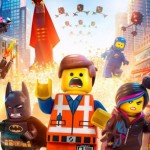Continuing our series on our favorite pop culture from 2011, our editors ranked their top-10 favorite motion pictures of the year.
10. Hugo 3D
While it might help to be a cinephile of Scorsese’s caliber to appreciate Hugo, loving his first “family” film has less to do with having an appreciation of film history, and more to do with having a childlike sense of wonder and imagination. Set in 1930’s Paris, Scorsese’s Dickensian 3D adventure is about an orphan boy named Hugo Cabret who is trying to find his place and purpose in the world after losing both his mother and father in separate incidents. Hugo’s father was a master clockmaker who passed along a love for automation and mystery to his son. After his alcoholic watchmaker Uncle disappears, Hugo is left to himself to survive between the walls of a railway station. Hugo is working on his father’s uncompleted last project, hoping to find a key that might unlock a message from his father—perhaps a message that will make sense of the narrative of his life.
I confess that it is difficult for a film to “capture my imagination” or draw me in completely, but Scorsese’s adventure drama achieved this from the very beginning with its opening shot of drifting snow—and perhaps first awakened my sense of belief by making me believe 3D can be more than a add-on gimmick or marketing tool. Ultimately, though, Hugo captivated me because it captured so well why I love going to the movies. The film powerfully depicts how stories, and the hope of redemption they offer, help us reconcile our emotional scars. Along with Hugo, we recognize how the contours of personal identity are constituted by narrative arc, a sense of purpose, and the pursuit of mystery. In Hugo’s quest, we see that the essential self calls us to a childlike faith. -Nick Olson
9. Cave of Forgotten Dreams
In Cave of Forgotten Dreams, Werner Herzog delivers what might be his most compelling documentary to date. He invites us to follow him as our tour guide through the Chauvet Cave in southern France, which contains what is believed to be 30,000 year old paintings—essentially the world’s oldest known art display. In observing handprints and countless drawings that display a level of artistic creativity and expression, we learn something that is quite an affirmation, if not a revelation: our Paleolithic ancestors weren’t doltishly inept—they were creators like us, developing a sense of artistic cultivation in the land before time.
While the tour itself is the most interesting part of the documentary, some of the interviews are a close second. In one interview, a professional researcher of the cave asserts that perhaps we should not be called “homo sapiens”—“the man who knows”—but, instead, “homo spiritualis.” Over the course of history, we human beings don’t know much in the grand scheme of things, but we all, as sentient beings, have a perceiving self-awareness that has been most commonly impressed with a sense of awe, or worship. And by expressing this sense of awe through creative artifacts, the sense of communion we feel reveals something to us about the divine tie that binds us as human creatures. –Nick Olson
8. Moneyball
How does a quirky film about sports statistics make it to a top ten list? The plot of Moneyball is a bit slow and a bit technical, two things that don’t typically make a movie a blockbuster, or even very watchable, for that matter. But in this film, the parts that makethe whole consistently “get on base” – which of course, is how you win games. Moneyball is part underdog story, part character study, and part heart-warmer, and each part is executed wonderfully.
The bulk of the acting is shouldered (quite well) by Brad Pitt as down-and-out Oakland As general manager Billy Beane, a man who has just lost his best players to teams with more money, and his marriage to baseball in general. You just can’t help but step into his shoes and pull for the guy. Throughout the entire cast the acting is subtle and sincere, and the characters are complex and interesting, so much so that you almost forget for a sec that you’re watching a “sports movie”.
Granted, Moneyball ends on a somewhat unresolved note – the team doesn’t end up winning big on the field, and Beane doesn’t end up winning big in his personal life. But I can relate to the Oakland As and Pitt’s Beane in a way I can’t relate to overly-dramatic characters in psuedo-historic epics. All in all, at the end, Beane and his team make an irreparable dent in “the system” – which, for most of us in this age, would be victory enough and more. -Kirk Bozeman
7. The Muppets
The Muppets is among my top three 2011 films, which, for me, means that it was one of the three total movies I would consider above mediocre. It’s been the sort of cinematic year in which, more than ever, I fear that I am slouching toward cranky senescence. Statler and Waldorf—or perhaps Sam the Eagle, minus his nationalism—have become my spiritual kin. This recognition leads me to the hard-hitting existential question at The Muppets’ emotional core: “Am I a man or am I a Muppet?” For those of us who have always suspected that we are, in fact, made of felt—writer/star Jason Segel undoubtedly numbers among this company, and I have my suspicions about songwriter Bret McKenzie—The Muppets comes as a welcome reassurance that we are not alone.
The movie-as-community aspect may veer uncomfortably into fan-fiction territory, as Drew McWeeny points out. But that community also has serious regulations, as McKenzie reveals in his description of his immersion in the do’s and don’ts of Muppethood: “Most of the animals can talk, but chickens can’t talk. Chickens can only cluck. Sometimes I’d write lyrics and the chickens would sing; then I’d find out in the studio that they could only cluck. And for penguins, it’s a subject of much controversy as to whether the penguins can talk or not. . . . And sometimes I’d be in the studio and one of the Muppets would refuse to sing a line because they didn’t think it was appropriate for the character.” In other words, it’s pretty much like Anglican/Episcopalian church: highly arbitrary and arcane rules, leading to an immensely joyful experience. And this is why I love The Muppets. -Carissa Smith
6. Super 8
When Super 8 was announced, it was done so under a veil of secrecy. The first teaser was startling and explosive, but still fairly enigmatic. But such is the case with J.J. Abrams, who certainly loves to misdirect audiences and keep them in the dark until its time for the reveal. That approach may have backfired a bit with Super 8, because when you get right down to it, it is, in many ways, a fairly straightforward summer popcorn flick.
Not that there’s anything wrong with that, because it’s a rather good one. Packed with lots of humor and heart, thanks to its wonderful primary cast of youngsters, as well as aliens, explosions, and military conspiracies Super 8 certainly evokes such classic sci-fi films as Close Encounters Of The Third Kind. It stumbles a bit in the end with an emotional coda that rings hollow, and the big alien reveal underwhelms, but when Abrams is piling on the tension and action, and his young characters are rushing around trying to save their town and complete a zombie movie, it sure is a lot of good, heartfelt fun. -Jason Morehead
5. Like Crazy
In the last few years, there have been a host of films that call into question the traditional romantic comedy formula. Often, though, those films can seem like just another formula offerred up to replace the old one: Boy meets girl, boy and girl fall in love, boy and girl encounter obstacles, boy and girl realize they are not meant to be together. Rather than asking us to reconsider the nature of romantic relationships, they simply shift the focus to the other side of the story: the relationships that don’t work, and were never meant to be.
Like Crazy, on the other hand, suggests that sometimes relationships that seem perfect, even on a cosmic, fated level, may not work out in the end. It has the bravery to diverge from the formula by making a movie that is narratively messy, because that is how the end of this sort of relationship works: neither of them wants it to end, and so they fight tooth and nail to save the relationship. The only problem is that they’re never fighting at the same time, in the same way. They are ships passing in the night, after crashing against one another several times over. Another risk the film takes is to present us with protagonists we grow to love, primarily so that we can grow increasingly frustrated with their mistakes. Their failure to take the sacrifices necessary to live up to their combined potential is so clearly unveiled that we find ourselves feeling frustrated with them as we do a friend who keeps making bad choices. The final outcome can be seen many different ways, depending on who you ask, but the nature of their struggle and the motives behind it are so clear, asking those questions after this film could result in some incredibly insightful and uncomfortable discussion. -Richard Clark
4. Certified Copy
Abbas Kiarostami’s Certified Copy was my second favorite film released in the US in 2011, but I suspect that this thoughtful, yet playful film will be the one that I return to most in the years to come. Some might be turned off by this European art house film; it follows a day-long walk and conversation through a local Italian village between a British author, James Miller (William Shimell), and an admiring French woman named Elle (Juliette Binoche). James is in town to discuss a book he’s written on the value of a copy versus the original work of art. At his presentation, Elle gives him her address and they spend the following day together discussing the nature of art, marriage, and life as they wander through the beautiful village.
The film becomes an alluring mystery when the nature of the couple’s relationship becomes a question. At a definite point in the film, the couple begins pretending (or are they?) that they have been in an intimate, perhaps declining, relationship for many years. Are they really married, or just pretending to be? The whole film plays on the themes of truth and authenticity as they relate to art, marriage, and faith. It’s the type of film that reveals something new with each viewing, and yet, while it may sound like nothing more than a mind game, Certified Copy has an endearingly light touch (perhaps because Binoche’s character shines through). While the film’s central mystery may remain open ended, this does not at all hinder an essential theme: there are ethics involved in authenticity. They’re what we might call the demands of love. -Nick Olson
3. Harry Potter and the Deathly Hallows Part 2
I’ve followed Harry Potter (books and films) since his inception, and the series remains one of the few that I regularly take the time to reread and re-watch, becoming more entangled in the magic with each return visit. So I went to the theatre to see Harry Potter and the Deathly Hallows II expecting to enjoy the show; what I didn’t anticipate was a game-changer, but that’s what the final installment turned out to be for me. As I read the books (and read and listen to them again), I understand Rowling’s intention with Severus Snape, yet somehow, the words on the pages just couldn’t make his sacrifice come alive for me the way actor Alan Rickman does. I am still haunted by his memories, just as his character was, and the painful realizations of love unrequited and love lost.
I never enjoyed (in the book or the film) the epilogue where Harry Potter and his friends stand around on the platform enjoying their immense good fortune with their prodigious and poorly-named offspring; that scene seemed too obvious, too contrived, with too much pandering to a fan base desperate for a happily-ever-after that never seemed in peril to me. But I wept with Snape, and for Snape. I felt the weight of sixteen years of sacrifice, the burden of his unbearable mission as he cradled Lily’s dead body and moaned. It wasn’t the joy of Harry’s future that this final film brought to life for me, it was the tragedy of Snape’s past. Harry gets his pseudo-resurrection, his heroic recognition, his beloved wife and children; Snape gives and gives and gives, leaving behind only a breathless emptiness in the wake of his cry.
That emptiness, for me, made the story complete—bigger than the happiness of a single boy whom we loved from scene one. Months later, I recall enjoying the film as a fitting conclusion to an epic series, but it’s not Harry’s story for me anymore. It’s Snape’s. -Erin Newcomb
2. Of Gods and Men
In the midst of a cultural moment when boisterous arguing and power-posturing are the means by which we seek cultural and human change, Xavier Beauvois’ film, Of Gods and Men, is a quiet meditation that is also one of the most moving portraits of Christlikeness that I’ve ever seen on film. Based on the true story of a group of Trappist monks who sacrificed their former lives to live modest, meditative lives in the Tibhirine monastery in Algeria, Beauvois’ film depicts the sacrifice they would have to face to remain in a war-torn region under increasing threat from Islamic terrorists. Yet, the monks’ desire to stay in Algeria amidst rising tensions is largely inspired by their peaceful inhabitance, interaction, and solidarity with Muslims (the film offers a clear contrast between “Islam” and “Islamism”). What will it say of their ministry—their identities and witness as Christians—if they abandon the region?
The film’s drama, then, centers on the monks’ decision of whether to stay in Algeria in the face of almost-certain persecution. What could possibly motivate them to sacrifice themselves—even unto death? On the eve of Christmas, it’s the Incarnation of God in Christ—and its embodied imperative to love one another—that is a source of strength to the monks. In short, Of Gods and Men is powerful in its depiction of a Gethsemane-like situation—where, in the face of violent persecution, we are called to put our swords down, and in fear and trembling, focus in prayerful worship on the love of God. In so doing, we come to experience our new birth in Christ more and more vividly. –Nick Olson
1. Tree of Life
When discussing The Tree of Life, there’s much to talk about. For example, the film’s creation sequence (which condenses billions of years of cosmic, geological, and biological evolution into a mind-blowing 20 minutes), its dreamlike rendition of childhood and small-town life circa the 1950s, and its exploration of topics ranging from the mercurial nature of memory to theodicy. But whenever I reflect on Terrence Malick’s stunning film, I invariably come back to one thing: it’s exploration of fatherhood.
The film exists solidly within the shadow of the main character’s father, a man we know only as Mr. O’Brien (wonderfully played by Brad Pitt). And I was completely unprepared for the extent to which I, myself, became overshadowed by this character, and by the way the film explores his relationship, both good and bad, with his sons. But perhaps this will tell you something: My first impulse upon leaving the theatre was to rush home and hug my children.
Heading into The Tree of Life, I was prepared for gorgeous visuals, for heady (even pretentious) dialog stuffed with grandiose philosophical and theological musings, for a meandering, non-linear storyline. I was not, however, prepared for how the film would destroy me as a father, and how it would reveal to me the ways in which I so often fail as a father. I was left wondering about how I am shaping my children, and will continue to shape them; about the values and ideals that I’m planting in their little souls even now; and about the earliest memories they will have of me. In a word, The Tree of Life left me… shaken. –Jason Morehead











